 W
WThe Bình Hòa Massacre was a massacre purportedly conducted by South Korean forces between December 3 and December 6, 1966, of 430 unarmed citizens in Bình Hòa village, Quảng Ngãi Province in South Vietnam. In 2000, however, it was reported that a monument within the village, gave the dates of the massacre as October 22, 24, and 26, 1966 and said that 403 people were killed by the South Koreans.
 W
WThe Bình Tai Massacre was a massacre allegedly perpetrated by South Korean Forces on 9 October 1966 of 29-168 citizens in Binh Tai village of Bình Định Province in South Vietnam.
 W
WThe Bodo League massacre was a massacre and war crime against communists and suspected sympathizers that occurred in the summer of 1950 during the Korean War. Estimates of the death toll vary. Historians and experts on the Korean War estimate that the full total ranges from at least 60,000–110,000 to 200,000.
 W
WThe Daejeon, or Taejon, massacre was an extrajudicial killings of political prisoners under anti-communist South Korean forces. US officers were present at the time of the slaughter, however it was blamed on the communist North Korean forces in the film Crime of Korea. Half a century later, the South Korean Truth and Reconciliation Commission investigated what happened in the political violence largely kept hidden from history, unlike the publicized North Korean executions of South Korean right-wingers.
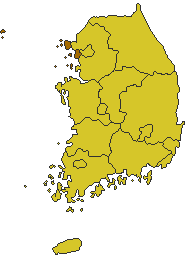 W
WThe Ganghwa massacre was a massacre conducted by the South Korean forces, South Korean Police forces and pro-South Korean militiamen, between 6 and 9 January 1951, of 212 to 1,300 unarmed civilians in the Ganghwa county of the Incheon metropolitan city in South Korea. The victims were collaborators with the Korean People's Army during North Korean rule. Before this massacre, 140 people were executed in Ganghwa as part of the Bodo League massacre in 1950.
 W
WThe Geochang massacre was a massacre conducted by the third battalion of the 9th regiment of the 11th Division of the South Korean Army between 9 February 1951 and 11 February 1951 of 719 unarmed citizens in Geochang, South Gyeongsang district of South Korea. The victims included 385 children. The 11th Division also conducted the Sancheong-Hamyang massacre two days earlier. The general commanding the division was Choe Deok-sin.
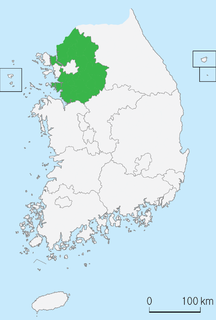 W
WThe Goyang Geumjeong Cave massacre was a massacre of over 153 unarmed civilians conducted between 9 October 1950 and 31 October 1950 by police in Goyang, Gyeonggi-do district of South Korea. After the victory of the Second Battle of Seoul, South Korean authorities arrested and summarily executed several individuals along with their families on suspicion of sympathizing with North Korea. The killings in Goyang coincided with the Namyangju massacre in nearby Namyangju.
 W
WThe Gwangju Uprising was a popular uprising in the city of Gwangju, South Korea, from May 18 to May 27, 1980 in which it is estimated that around 600 people were killed. During this period, Gwangju citizens took up arms after local Chonnam University students who were demonstrating against the martial law government were fired upon, killed, raped and beaten by government troops. The event is sometimes called 5·18, in reference to the date the movement began. The uprising is also known as the Gwangju Democratization Struggle, the May 18 Democratic Uprising, or the May 18 Gwangju Democratization Movement.
 W
WThe Hà My Massacre was a massacre purportedly conducted by the South Korean Marines on 25 February 1968 of unarmed citizens in Hà My village, Điện Dương commune, Điện Bàn District, Quảng Nam Province in South Vietnam.
 W
WThe Hangang Bridge bombing was a demolition operation conducted by the South Korean Army to destroy the Hangang Bridge in Seoul, South Korea, on 28 June 1950, to delay the rapid North Korean advance towards the city.
 W
WThe Jeju uprising, known in South Korea as the Jeju April 3 incident, was an uprising that occurred on Jeju Island from April 1948 to May 1949. Residents of Jeju opposed to the division of Korea had protested and had been on a general strike since 1947 against elections scheduled by the United Nations Temporary Commission on Korea (UNTCOK) to be held only in the territory controlled by the United States Army Military Government in Korea. The Workers' Party of South Korea and its supporters launched an insurgency in April 1948, attacking the police, and Northwest Youth League members stationed on Jeju mobilized to violently suppress the protests. The First Republic of Korea under President Syngman Rhee escalated the suppression of the uprising from August 1948, declaring martial law in November and beginning an "eradication campaign" against rebel forces in the rural areas of Jeju in March 1949, defeating them within two months. Many rebel veterans and suspected sympathizers were later killed upon the outbreak of the Korean War in June 1950, and the existence of the Jeju uprising was officially censored and repressed in South Korea for several decades.
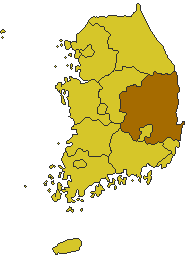 W
WThe Mungyeong Massacre was a massacre conducted by 2nd and 3rd platoon, 7th company, 3rd battalion, 25th Infantry Regiment, 3rd Infantry Division of the South Korean Army on 24 December 1949 of 86 to 88 unarmed citizens in Mungyeong, North Gyeongsang district of South Korea, all of whom were civilians and a majority of whom were children and elderly people. The victims included 32 children. The victims were massacred because they were suspected communist supporters or collaborators. However, the South Korean government blamed the crime on communist guerrillas for decades.
 W
WThe Namyangju massacre was a mass killing conducted by South Korean police and local militia forces between October 1950 and early 1951 in Namyangju, Gyeonggi-do district of South Korea. More than 460 people were summarily executed, including at least 23 children under the age of 10. After the victory of the Second Battle of Seoul, South Korean authorities arrested and summarily executed several individuals along with their families on suspicion of sympathizing with North Korea. During the massacre, South Korean Police conducted the Goyang Geumjeong Cave massacre in Goyang near Namyangju.
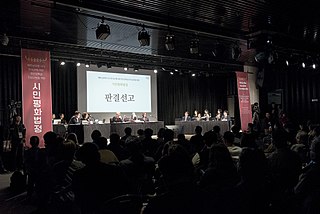 W
WThe People's Tribunal on War Crimes by South Korean Troops during the Vietnam War was a citizen's tribunal organised by South Korean social organizations including Minbyun, Korea-Vietnam Peace Foundation, The Korean Council for the Women Drafted for Military Sexual Slavery by Japan during 21–22 April 2018.
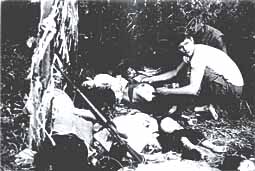 W
WThe Phong Nhị and Phong Nhất massacre was a massacre reported to have been conducted by the 2nd Marine Brigade of the Republic of Korea Marines (ROKMC) on 12 February 1968 of unarmed citizens in the villages of Phong Nhị and Phong Nhất, Điện Bàn District of Quảng Nam Province in South Vietnam. The South Korean forces had been newly transferred from the area, in the wake of the Tet Offensive, with the village located in a densely populated region in and around Da Nang. Transferring Korean Marines to the populated Da Nang sector from a less populated sector was unpopular with ARVN and US Commanders and setting back pacification and relation-building efforts, due to the behaviour of Korean forces.
 W
WThe Sancheong and Hamyang massacre was a massacre conducted by a unit of the South Korean Army 11th Division during the Korean War. On 7 February 1951, 705 unarmed citizens in Sancheong and Hamyang, South Gyeongsang district of South Korea were killed. The victims were civilians and 85% of them were women, children and elderly people. The 11th Division also conducted the Geochang massacre two days later. The division's commanding general was Choe Deok-sin.
 W
WThe Sinchon Massacre was a massacre of civilians between 17 October and 7 December 1950, in or near the town of Sinchon. North Korean sources claim the massacre was committed by South Korean military forces under the authorization of the U.S. military and that 30,000–35,000 people were killed. Other sources dispute the death toll and accuse Korean right-wing security police and communists of the killings. The event took place during the second phase of the Korean War and the retreat of the DPRK government from Hwanghae Province.
 W
WYeosu-Suncheon Rebellion, also known as the Yeo-Sun Incident, was a rebellion that began in October 1948 and mostly ended by November of the same year. However, pockets of resistance lasted through to 1957, almost 10 years later.